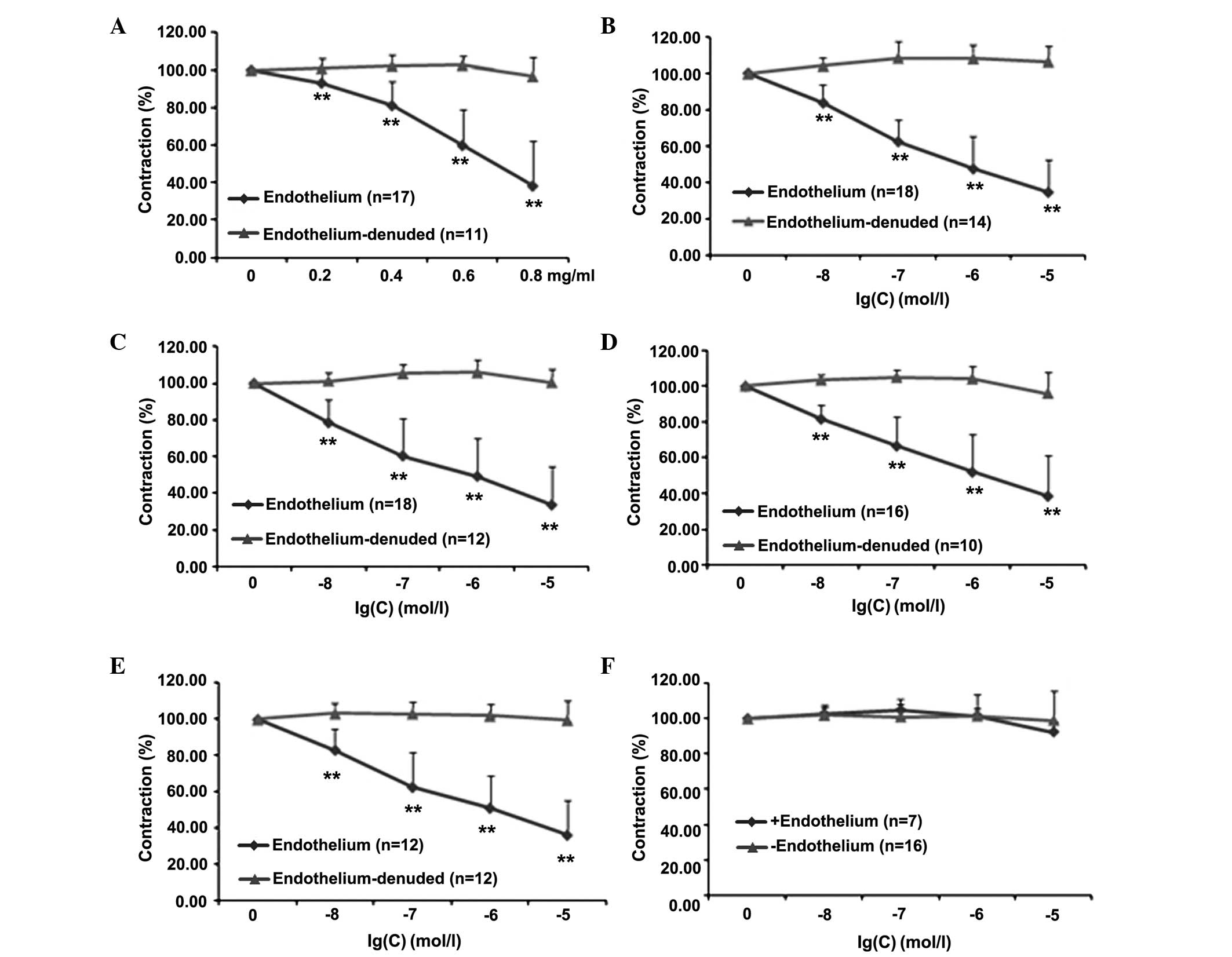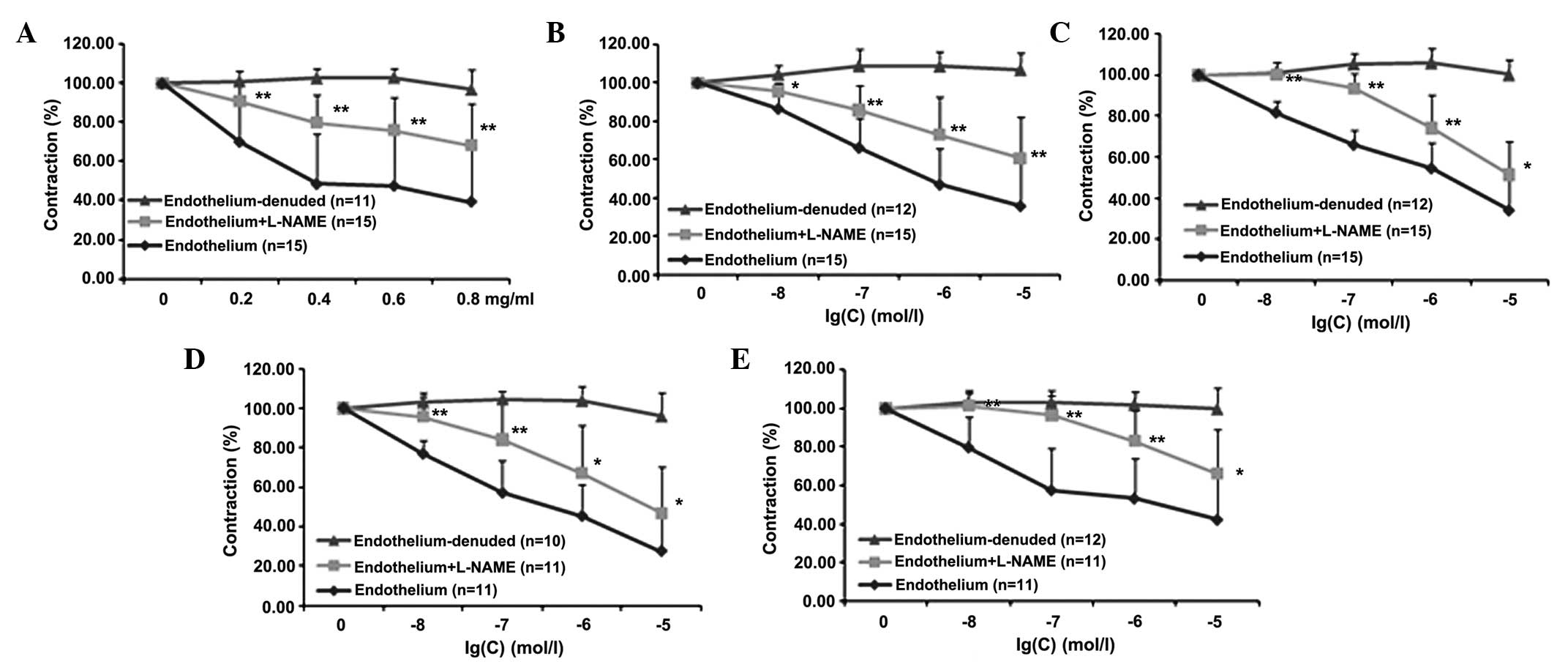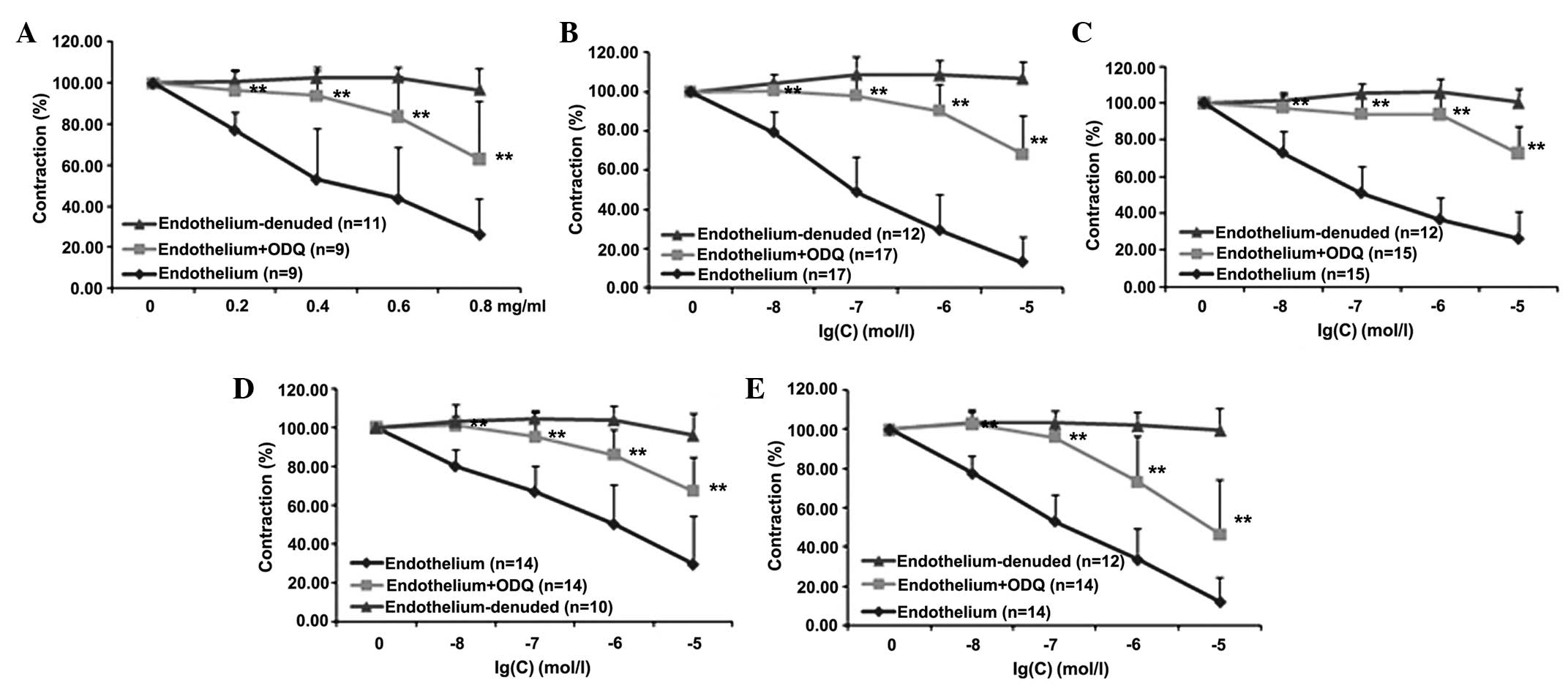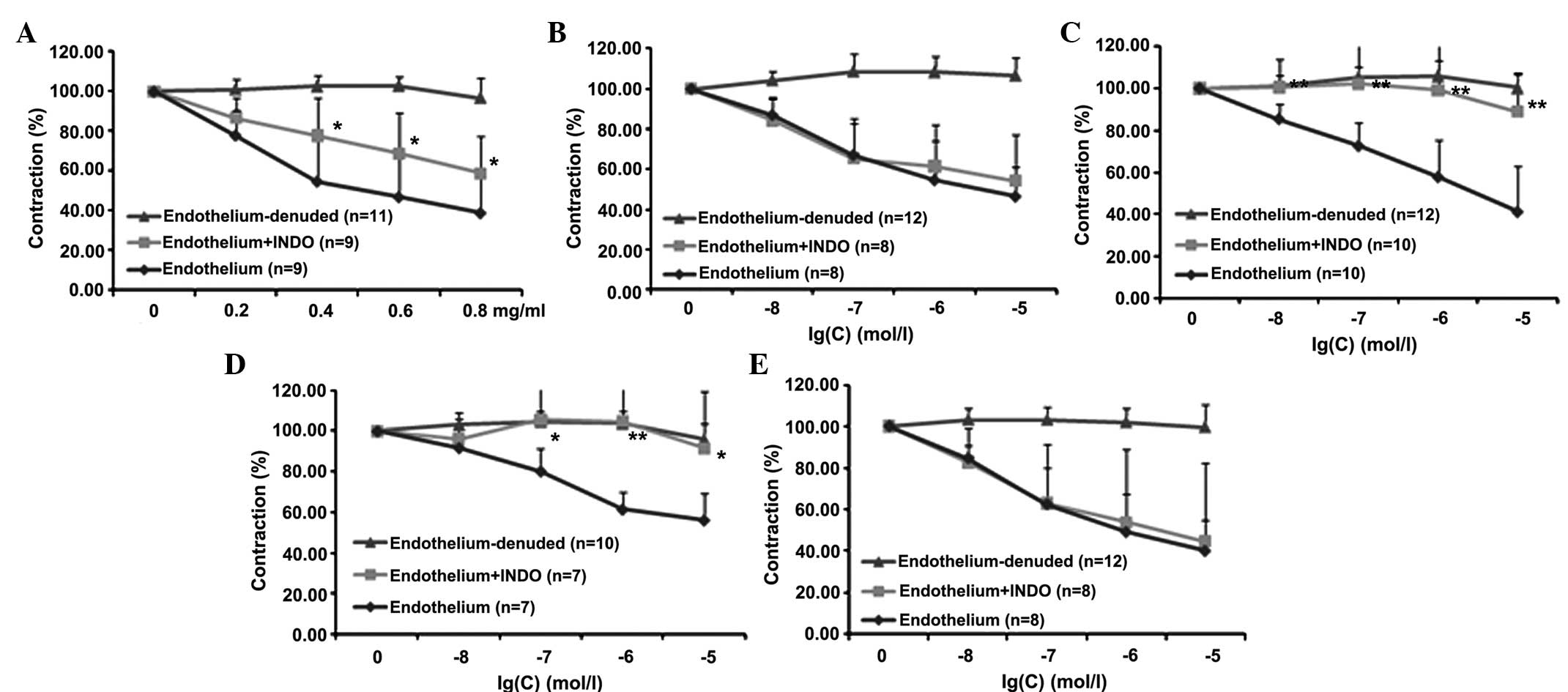|
1
|
Kim SJ, Lee J, Jee SH, Nam CH, Chun KH,
Park IS and Lee SY: Cardiovascular Risk Factors for Incident
Hypertension in the Prehypertensive Population. Epidemiol Health.
32:e20100032010. View Article : Google Scholar : PubMed/NCBI
|
|
2
|
Vasan RS, Larson MG, Leip EP, Evans JC,
O'Donnell CJ, Kannel WB and Levy D: Impact of high-normal blood
pressure on the risk of cardiovascular disease. N Engl J Med.
345:1291–1297. 2001. View Article : Google Scholar : PubMed/NCBI
|
|
3
|
Chobanian AV, Bakris GL, Black HR, Cushman
WC, Green LA, Izzo JL Jr, Jones DW, Materson BJ, Oparil S, Wright
JT Jr and Roccella EJ: National Heart, Lung, and Blood Institute
Joint National Committee on Prevention, Detection, Evaluation, and
Treatment of High Blood Pressure; National High Blood Pressure
Education Program Coordinating Committee: The Seventh Report of the
Joint National Committee on Prevention, Detection, Evaluation, and
Treatment of High Blood Pressure: the JNC 7 report. JAMA.
289:2560–2572. 2010. View Article : Google Scholar
|
|
4
|
Erdine S, Ari O, Zanchetti A, Cifkova R,
Fagard R, Kjeldsen S, Mancia G, Poulter N, Rahn KH, Rodicio JL, et
al: ESH-ESC guideline for the management of hypertension. Herz.
31:331–338. 2006. View Article : Google Scholar : PubMed/NCBI
|
|
5
|
Toda N, Nakanishi S and Tanabe S:
Aldosterone affects blood flow and vascular tone regulated by
endothelium-derived NO: Therapeutic implications. Br J Pharmacol.
168:519–533. 2013. View Article : Google Scholar : PubMed/NCBI
|
|
6
|
Kopincova J, Puzserova A and Bernatova I:
Chronic low-dose L-NAME treatment effect on cardiovascular system
of borderline hypertensive rats: Feedback regulation? Neuro
Endocrinol Lett. 29:784–789. 2008.PubMed/NCBI
|
|
7
|
Tsai AL, Berka V, Sharina I and Martin E:
Dynamic ligand exchange in soluble guanylyl cyclase (sGC):
Implications for sGC regulation and desensitization. J Biol Chem.
286:43182–43192. 2011. View Article : Google Scholar : PubMed/NCBI
|
|
8
|
Feelisch M, Kotsonis P, Siebe J, Clement B
and Schmidt HH: The soluble guanylyl cyclase inhibitor
1H-[1,2,4]oxadiazolo[4,3,-a] quinoxalin-1-one is a nonselective
heme protein inhibitor of nitric oxide synthase and other
cytochrome P-450 enzymes involved in nitric oxide donor
bioactivation. Mol Pharmacol. 56:243–253. 1999.PubMed/NCBI
|
|
9
|
Kasznicki J and Wiktorowsha-Owczarek A:
Effects of indomethacin on hymodynamic parameters after intravenous
administration of propranolol and enalaprilat in rabbits. Pol J
Pharmacol. 53:487–493. 2001.PubMed/NCBI
|
|
10
|
Zhang XY, Guo SL and Lv GY: Research
progress of the mechanism of antihypertensive Traditional Chinese
Medicine. Zhejiang Zhong Yi Yao Da Xue Xue Bao. 29:84–86. 2005.(In
Chinese).
|
|
11
|
Wang HQ, Yang HJ and Li ZH: Research
progress of antihypertension drug. Jibing Jiance Yu Kongzhi.
1:35–38. 2013.(In Chinese).
|
|
12
|
Bai Y: Evaluation and rational application
of antihypertensive drugs. Chifeng Xue Yuan Xue Bao. 88–89.
2007.(In Chinese).
|
|
13
|
Guo HB, Cui XM, An N and Cai GP: Sanchi
ginseng (Panax notoginseng (Burkill) F. H. Chen) in China:
Distribution, cultivation and variations. Genet Resour Crop Evol.
57:453–460. 2010. View Article : Google Scholar
|
|
14
|
Ng TB: Pharmacological activity of sanchi
ginseng (Panax notoginseng). J Pharm Pharmacol. 58:1007–1719. 2006.
View Article : Google Scholar : PubMed/NCBI
|
|
15
|
He L, Chen X, Zhou M, Zhang D, Yang J,
Yang M and Zhou D: Radix/rhizoma notoginseng extract
(Sanchitongtshu) for ischemic stroke: A randomized controlled
study. Phytomedicine. 18:437–442. 2011. View Article : Google Scholar : PubMed/NCBI
|
|
16
|
Zheng X, Deng YH, Feng Y, Liu Y, Yang L,
Huang Y, Sun J, Liang W and Guan Y: Pharmacokinetics and safety of
ginsenoside Rd following a single or multiple intravenous dose in
healthy Chinese volunteers. J Clin Pharmacol. 50:285–292. 2010.
View Article : Google Scholar : PubMed/NCBI
|
|
17
|
Liu J, Wang Y, Qin L, Yu Y and Wang C:
Saponins of Panax notoginseng: Chemistry, cellular targets and
therapeutic opportunities in cardiovascular diseases. Expert Opin
Investig Drugs. 23:523–539. 2014. View Article : Google Scholar : PubMed/NCBI
|
|
18
|
Uzayisenga R, Ayeka PA and Wang Y:
Anti-diabetic potential of Panax notoginseng saponins (PNS): A
review. Phytother Res. 28:510–516. 2014. View Article : Google Scholar : PubMed/NCBI
|
|
19
|
Cicero AF, Bandieri E and Arletti R:
Orally administered Panax notoginseng influence on rat spontaneous
behaviour. J Ethnopharmacol. 73:387–391. 2000. View Article : Google Scholar : PubMed/NCBI
|
|
20
|
Huang YS, Yang ZC, Yan BG, Hu XC, Li AN
and Crowther RS: Improvement of early postburn cardiac function by
use of Panax notoginseng and immediate total eschar excision in one
operation. Burns. 25:35–41. 1999. View Article : Google Scholar : PubMed/NCBI
|
|
21
|
Wang XJ, Ichikawa H and Konishi T:
Antioxidant potential of qizhu tang, a Chinese herbal medicine, and
the effect on cerebral oxidative damage after ischemia reperfusion
in rats. Biol Pharm Bull. 24:558–563. 2001. View Article : Google Scholar : PubMed/NCBI
|
|
22
|
Li XH and Li SH: Effects of total saponins
of Sanchi (Panax pseudo-ginseng var. notoginseng) on TNF, NO and
its mechanisms. Zhong Cao Yao. 307:514–515. 1999.(In Chinese).
|
|
23
|
Liu S and Chen JX: Study on effects of raw
and cooked Panax notoginseng on blood lipids. Acta Pharmacology
Sinica. 5:100–103. 1984.
|
|
24
|
Chen W, Dang Y and Zhu C: Simultaneous
determination of three major bioactive saponins of Panax
notoginseng using liquid chromatography-tandem mass spectrometry
and a pharmacokinetic study. Chin Med. 5:122010. View Article : Google Scholar : PubMed/NCBI
|
|
25
|
Wang JR, Yao LF, Gao WN, Liu Y, Yick PW,
Liu L and Jiang ZH: Quantitative comparison and metabolite
profiling of saponins in different parts of the root of Panax
notoginseng. J Agric Food Chem. 62:9024–9034. 2014. View Article : Google Scholar : PubMed/NCBI
|
|
26
|
Wang L, Li Z, Zhao X, Liu W, Liu Y, Yang
J, Li X, Fan X and Cheng Y: A network study of Chinese medicine
xuesaitong injection to elucidate a complex mode of action with
multicompound, multitarget and multipathway. Evid Based Complement
Alternat Med. 2013:6523732013.PubMed/NCBI
|
|
27
|
Qin F, Yu SL, Zheng Y and Gao YH:
Simultaneous determination of ginsenoside Rg1 and ginsenoside Re in
total saponins of fibrous roots of Panax notoginseng by HPLC-MS/MS.
Zhongguo Yao Fang. 21:2922–2924. 2010.(In Chinese).
|
|
28
|
Zhang C, Bao J, Li X and Zheng Y: HPLC
determination of the amount of ginsenosides in different parts of
Panax ginseng C.A.Mey. and P. quiquefolius L. and P. notoginseng
(Burk) F.H.Chen. Yao Wu Fen Xi Za Zhi. 25:1190–1194. 2005.(In
Chinese).
|
|
29
|
Jiang YQ, Wang Q, Ma SP and Danf XD:
Quantitative determination of saponins in the root of Panax
pseudoginseng var.notoginseng by HPLC-ELSD and UV
spectrophotometry. Zhong Cao Yao. 31:737–739. 2000.(In
Chinese).
|
|
30
|
Wan JB, Wang YT and Li SP: Sanqi (Panax
notoginseng)Pharmacological Activity-Based Quality Control of
Chinese Herbs. Li SP and Wang YT: Nova Science Publishers; New
York: pp. 179–203. 2008
|
|
31
|
Wan JB, Zhang QW, Ye WC and Wang YT:
Quantification and separation of protopanaxatriol and
protopanaxadiol type saponins from Panax notoginseng with
macroporous resins. Sep Pur Tech. 60:198–205. 2008. View Article : Google Scholar
|
|
32
|
Xu SY: Methodology of Pharmacological
Experiments. 2nd. People's Health Publishing House; Beijing: pp.
886–887. 1994, (In Chinese).
|
|
33
|
Qiao CL, Ding YF and Yang CR:
Pharmacologic research progress of notoginseng total saponins.
Zhongguo Xian Dai Zhong Yao. 11:25–30. 2012.(In Chinese).
|
|
34
|
Guo WJ, Yang M, Zhu JG, et al: New
progress on pharmacological study of Panax notoginsenoside on the
cardiovascular effects. Xian Dai Shi Pin Yu Yao Pin Za Zhi. 2:1–4.
2007.(In Chinese).
|
|
35
|
Cheng Y, Shen LH and Zhang JT:
Anti-amnestic and anti-aging effects of ginsenoside Rg1 and Rb1 and
its mechanism of action. Acta Pharmacol Sin. 26:143–149. 2005.
View Article : Google Scholar : PubMed/NCBI
|
|
36
|
Zhang JT: Nootropic mechanisms of
ginsenoside Rg1-influence on neuronal plasticity and neurogenesis.
Yao Xue Xue Bao. 40:385–388. 2005.(In Chinese). PubMed/NCBI
|
|
37
|
Zhong ZD, Wang CM, Wang W, Shen L and Chen
ZH: Major hypoglycemic ingredients of Panax notoginseng saponins
for treating diabetes. Sichuan Da Xue Xue Bao Yi Xue Ban.
45:235–239. 2014.(In Chinese). PubMed/NCBI
|
|
38
|
Peng L, Sun S, Xie LH, Wicks SM and Xie
JT: Ginsenoside Re: Pharmacological effects on cardiovascular
system. Cardiovasc Ther. 30:e183–1e88. 2012. View Article : Google Scholar : PubMed/NCBI
|
|
39
|
Ye R, Zhao G and Liu X: Ginsenoside Rd for
acute ischemic stroke: Translating from bench to bedside. Expert
Rev Neurother. 13:603–613. 2013. View Article : Google Scholar : PubMed/NCBI
|
|
40
|
He K, Yan L, Pan CS, Liu YY, Cui YC, Hu
BH, Chang X, Li Q, Sun K, Mao XW, et al: ROCK-dependent ATP5D
modulation contributes to the protection of notoginsenoside NR1
against ischemia-reperfusion-induced myocardial injury. Am J
Physiol Heart Circ Physiol. 307:H1764–H1776. 2014. View Article : Google Scholar : PubMed/NCBI
|
|
41
|
Wang H, Qu JT, Zhao X, Guo Y and Mao HP:
Vasodilator effect of oroxylin A on thoracic aorta isolated from
rats. Zhong Xi Yi Jie He Xue Bao. 10:880–885. 2012.(In Chinese).
View Article : Google Scholar : PubMed/NCBI
|
|
42
|
Martinsen A, Baccelli C, Navarro I, Abad
A, Quetin-Leclercq J and Morel N: Vascular activity of a natural
diterpene isolated from Croton zambesicus and of a structurally
similar synthetic trachylobane. Vascul Pharmacol. 52:63–69. 2010.
View Article : Google Scholar : PubMed/NCBI
|
|
43
|
McFadzean I and Gibson A: The developing
relationship between receptor-operated and store-operated calcium
channels in smooth muscle. Br J Pharmacol. 135:1–13. 2002.
View Article : Google Scholar : PubMed/NCBI
|
|
44
|
Slish DF, Arvigo R and Balick MJ: Alseis
yucatanensis: A natural product from Belize that exhibits multiple
mechanisms of vasorelaxation. J Ethnopharmacol. 92:297–302. 2004.
View Article : Google Scholar : PubMed/NCBI
|
|
45
|
Stone DJ and Johns RA:
Endothelium-dependent effects of halothane, enflurane and
isoflurane on isolated rat aortic vascular rings. Anesthesiology.
71:126–132. 1989. View Article : Google Scholar : PubMed/NCBI
|
|
46
|
Furchgott RF: The role of endothelium in
the responses of vascular smooth muscle to drugs. Annu Rev
Pharmacol Toxicol. 24:175–194. 1984. View Article : Google Scholar : PubMed/NCBI
|
|
47
|
Vanhoutte PM, Rubanyi GM, Miller VM and
Houston DS: Modulation of vascular smooth muscle contraction by the
endothelium. Annu Rev Physiol. 48:307–320. 1986. View Article : Google Scholar : PubMed/NCBI
|
|
48
|
Corvol P, Alhenc-Gelas F and Soubrier F:
The vascular endothelium, a site of production and metabolism of
vasoactive peptides. Med Sci (Paris). 9:1050–1060. 1993.(In
French). View Article : Google Scholar
|
|
49
|
Negro R: Endothelial effects of
antihypertensive treatment: Focus on irbesartan. Vasc Health Risk
Manag. 4:89–101. 2008. View Article : Google Scholar : PubMed/NCBI
|
|
50
|
Hellsten Y, Nyberg M, Jensen LG and
Mortensen SP: Vasodilator interactions in skeletal muscle blood
flow regulation. J Physiol. 590:6279–6305. 2012. View Article : Google Scholar
|
|
51
|
Wang GZ, Luo XF, Sun B, Hou YL, Li LP,
Zheng DD and Qiao GF: Effects and mechanism of the flavonoid
glycoside of Polygonum aviculare L. on vascular endothelium
relaxation. Haerbin Yi Ke Da Xue Xue Bao. 4:315–318. 2010.(In
Chinese).
|
|
52
|
Li YJ, Zhou JW and Bin K: The diastolic
mechanism of Gualou Xiebai Banxia Decoction. Zhong Yao Yao Li Yu
Lin Chuang. 4:5–7. 2010.(In Chinese).
|
|
53
|
Li XL, Zou XM, Nie G, Song ML and Li G:
Roles of neuronal nitric oxide synthase and inducible nitric oxide
synthase in intestinal transplantation of rats. Transplant Proc.
45:2497–2501. 2013. View Article : Google Scholar : PubMed/NCBI
|
|
54
|
Denninger JW and Marletta MA: Guanylate
cyclase and the NO/cGMP signaling pathway. Biochim Biophys Acta.
1411:334–350. 1999. View Article : Google Scholar : PubMed/NCBI
|
|
55
|
Marinko M, Novakovic A, Nenezic D,
Stojanovic I, Milojevic P, Jovic M, Ugresic N, Kanjuh V, Yang Q and
He GW: Nicorandil directly and cyclic GMP-dependently opens K+
channels in human bypass grafts. J Pharmacol Sci. 128:59–64. 2015.
View Article : Google Scholar : PubMed/NCBI
|
|
56
|
Fang WT, Li HJ, Zhou LS and Su LQ:
Prostacyclin signal pathway: Research advances. Guo Ji Yao Xue Yan
Jiu Za Zhi. 4:276–278. 2010.(In Chinese).
|
|
57
|
Zhou P, Wang HP and Jiang HD: The Extracts
of Cortex Eucammiae induces both directly and endothelium-dependent
relaxation in rat thoracic aorta. Zhongguo Xian Dai Ying Yong Yao
Xue. 3:182–185. 2007.(In Chinese).
|













